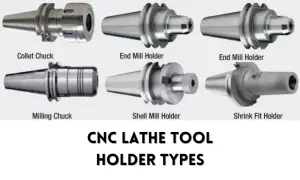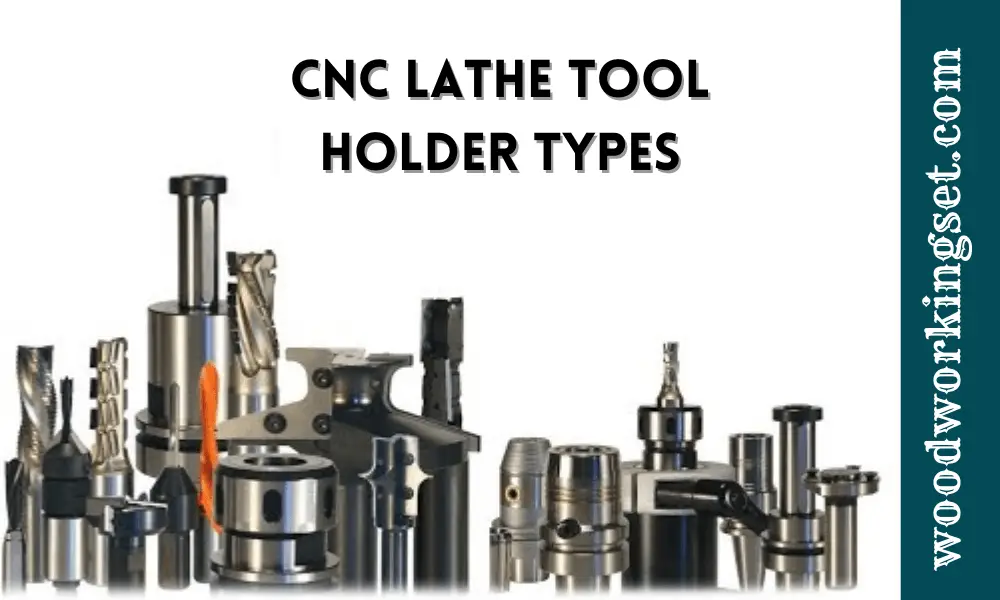A CNC lathe tool holder is an essential component of a CNC lathe machine that securely holds the cutting tool in place during machining operations. It plays a crucial role in ensuring precision, accuracy, and efficiency in the manufacturing process. Without a proper tool holder, the cutting tool may not be securely clamped, leading to poor machining quality and potential damage to the workpiece. In this article, we will explore the different types of CNC lathe tool holders and discuss their advantages and importance in detail.
What is a CNC lathe tool holder?
Table of Contents
Definition of a CNC lathe tool holder
A CNC lathe tool holder, also known as a CNC tool holder, is a device used to secure and support cutting tools in a lathe machine. It is designed to hold the cutting tool firmly in place during machining operations, allowing for precise and accurate turning, facing, drilling, and threading of the workpiece.
Importance of a CNC lathe tool holder
The CNC lathe tool holder is crucial for maintaining the stability of the cutting tool during the machining process. It ensures proper alignment and minimizes vibrations, reducing the risk of tool breakage and workpiece damage. Additionally, a high-quality tool holder enhances the performance of the cutting tool, resulting in improved surface finish and dimensional accuracy of the machined parts.
Components of a CNC lathe tool holder
A typical CNC lathe tool holder consists of several components, including the clamping mechanism, shank, collet, chuck, and adapter. The clamping mechanism ensures a secure grip on the cutting tool, preventing slippage or movement during machining operations. The shank connects the tool holder to the lathe spindle, while the collet is responsible for holding the cutting tool. The chuck serves as the interface between the tool holder and the lathe machine, allowing for quick and easy tool changes. Finally, the adapter provides compatibility between the tool holder and the lathe machine.
Why is it important to choose the right tool holder?
Impact of the wrong tool holder
Choosing the wrong tool holder for a CNC lathe machine can have a significant impact on machining performance and product quality. An incorrect tool holder may not provide the required stability and clamping force, leading to poor cutting performance, increased tool wear, and reduced tool life. It can also result in excessive runout, causing dimensional inaccuracies and surface imperfections on the machined parts.
Benefits of choosing the right tool holder
On the other hand, selecting the right tool holder for your CNC lathe machine can yield several benefits. It ensures proper tool alignment and clamping, maximizing cutting performance and productivity. A suitable tool holder provides excellent rigidity, reducing tool deflection and improving dimensional accuracy and surface finish. It also allows for efficient chip evacuation, prolonging tool life and reducing machining time.
Factors to consider when selecting a tool holder
When choosing a tool holder for your CNC lathe, several factors should be considered. These include the type of tool holder required for the specific machining operation, such as turning, facing, or drilling. The size and compatibility of the tool holder with the lathe machine and cutting tool are also crucial. Additionally, the accuracy and runout of the tool holder, clamping force, and tool height adjustment capabilities should be taken into account.

Common types of CNC lathe tool holders
Collet chucks
Collet chucks are a popular type of tool holder commonly used in CNC lathe machines. They use collets to securely clamp the cutting tool, offering excellent gripping force and stability. Collet chucks provide concentricity, ensuring accurate and precise machining. They are available in various sizes and are suitable for holding both solid and round-shank cutting tools.
Hydraulic tool holders
Hydraulic tool holders use hydraulic pressure to clamp the cutting tool. They provide a high clamping force and superior rigidity, ensuring stability and precision during machining. Hydraulic tool holders are known for their excellent vibration damping capabilities, making them ideal for heavy-duty cutting operations and high-speed machining.
Milling machine tool holders
Milling machine tool holders are versatile tool holders that can be used for both milling and turning operations. They are designed to hold multiple cutting tools simultaneously, allowing for efficient and quick tool changes. Milling machine tool holders are available in various configurations, such as HSK, BT, and CAT, offering compatibility with different types of milling machines.
Advantages of different types of tool holders
Benefits of collet chucks
Collet chucks offer several advantages in CNC lathe machining. They provide excellent gripping force, ensuring secure and reliable tool clamping. Collet chucks also offer high concentricity, enabling precise and accurate machining. Moreover, they are available in different sizes and compatible with a wide range of cutting tools, making them versatile for various machining applications.
Advantages of hydraulic tool holders
Hydraulic tool holders excel in heavy-duty and high-speed machining operations. They provide a high clamping force, eliminating tool slippage and maximizing cutting performance. Hydraulic tool holders also offer superior vibration damping, reducing the risk of tool chatter and improving surface finish. Their exceptional rigidity ensures stability during machining, resulting in dimensional accuracy and improved tool life.
Features of milling machine tool holders
Milling machine tool holders offer the advantage of holding multiple tools simultaneously, allowing for efficient tool changes and increased productivity. They provide versatility in machining operations, enabling both milling and turning processes. The different types of milling machine tool holders, such as the HSK, BT, and CAT configurations, provide compatibility with various milling machines.
How to choose the right tool holder for your CNC lathe?
Finding the right tool holder for specific applications
When selecting a tool holder for your CNC lathe, consider the specific machining applications you will be performing. Different operations may require different types of tool holders, such as turning, facing, drilling, or milling. Understanding the requirements of your machining process will help you choose the most suitable tool holder for optimal performance.
Considerations for tool size and compatibility
The size and compatibility of the tool holder with your CNC lathe machine and cutting tool are essential factors to consider. Ensure that the tool holder is compatible with the shank size of your cutting tool and the spindle interface of your lathe machine. A mismatch in sizes can result in poor clamping and reduced machining performance.
Understanding the importance of tool holder accuracy
Tool holder accuracy, including runout and concentricity, is critical for achieving precise and accurate machining. Ensure that the tool holder you choose provides high levels of accuracy and minimal runout. This will minimize dimensional errors and surface imperfections, resulting in high-quality machined parts.
Conclusion
Choosing the right tool holder is essential for achieving optimal performance and quality in CNC lathe machining operations. A high-quality tool holder ensures stability, precision, and efficiency, leading to improved productivity and reduced costs. By considering the specific requirements of your machining applications, tool size and compatibility, and tool holder accuracy, you can select the most suitable tool holder that meets your needs. Whether it’s a collet chuck, hydraulic tool holder, or milling machine tool holder, each type offers unique advantages that can enhance your CNC lathe machining capabilities.

